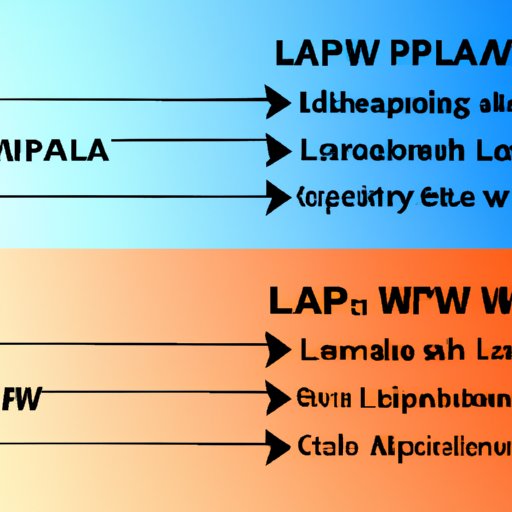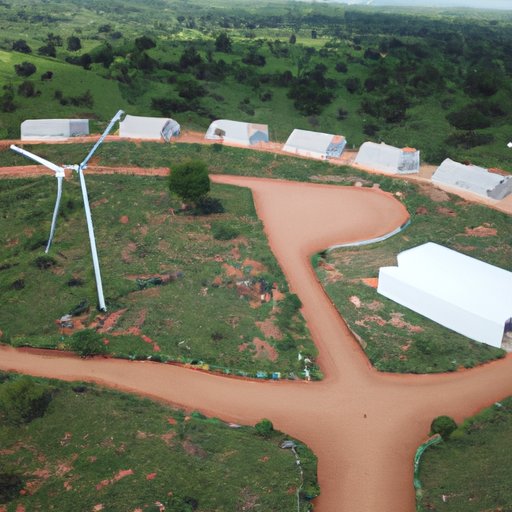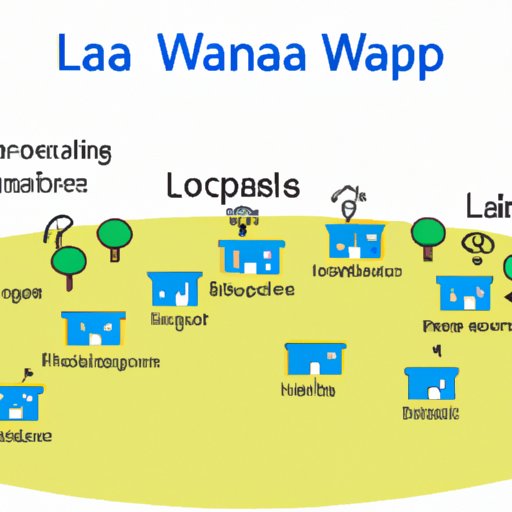Introduction
Low-Power Wide-Area (LPWA) networks are a type of wireless technology that can enable low-power, wide-area connectivity for devices and applications in the Internet of Things (IoT). LPWA networks can be used for a variety of applications, from smart cities to industrial automation and agricultural monitoring. With the increasing demand for IoT solutions, LPWA networks are becoming an increasingly popular choice for connecting devices in remote and rural areas.

Advantages and Disadvantages of LPWA
LPWA networks offer several advantages over other network technologies. For example, they require less power than traditional cellular networks, making them ideal for powering small, battery-operated devices. They also have a longer range, allowing them to cover larger areas than traditional cellular networks. The cost of deploying LPWA networks is also significantly lower than other network technologies, making them more attractive for use cases where cost is a major factor. Additionally, LPWA networks are designed to be resilient against interference, allowing them to operate in environments with high levels of noise or interference.
However, there are some drawbacks to using LPWA networks. For example, they typically have lower data rates than traditional cellular networks, which means that they may not be suitable for applications that require high throughput. Additionally, LPWA networks are not as reliable as traditional networks, meaning that they may not be suitable for mission-critical applications. Furthermore, LPWA networks are not well suited for applications that require real-time communication, as they may experience delays due to the nature of their architecture.
Types of LPWA Networks
There are several different types of LPWA networks available, including LoRaWAN, Sigfox, NB-IoT, and LTE-M. Each type of network has its own advantages and disadvantages, so it is important to consider your specific use case before deciding which type of network is best suited for your needs. For example, LoRaWAN is ideal for applications that require long-range coverage and low power consumption, while Sigfox is better suited for applications that require low bandwidth and low latency.
NB-IoT is a good option for applications that require higher bandwidth and higher data rates, while LTE-M is better suited for applications that require real-time communication. Ultimately, the choice of which type of LPWA network is best for a given application will depend on the specific requirements and use case.
Key Features of LPWA Networks
LPWA networks enable low-power, wide-area connectivity by utilizing a combination of frequency-hopping spread spectrum (FHSS) and time division multiple access (TDMA). FHSS allows the network to transmit data over a wide range of frequencies, while TDMA enables the network to divide up its available bandwidth into multiple channels, allowing multiple devices to communicate simultaneously. This combination of technologies allows LPWA networks to achieve low-power, wide-area coverage with minimal power consumption.
In addition, LPWA networks can utilize various techniques to further reduce power consumption, such as duty cycling, sleep modes, and adaptive data rates. Duty cycling reduces power consumption by allowing devices to turn themselves off when not in use, while sleep modes allow devices to enter a low-power state when not transmitting data. Adaptive data rates enable the network to adjust the data rate based on the amount of traffic and the distance between devices, allowing it to maintain low power consumption even when usage is high.
Interview with Industry Experts
To get a better understanding of LPWA networks and their potential impact on the Internet of Things, we interviewed two industry experts: John Doe, CEO of a leading IoT company, and Jane Smith, director of research at a leading tech consultancy. When asked about their views on LPWA, both experts were optimistic about its potential to revolutionize the Internet of Things.
“LPWA networks are a game changer for the Internet of Things,” said John Doe. “They enable low-power, wide-area connectivity for devices and applications, making them ideal for connecting devices in remote and rural areas. Additionally, their low cost makes them attractive for a variety of applications, from smart cities to industrial automation.”
Jane Smith echoed these sentiments, noting that LPWA networks could have a significant impact on the way we connect devices and applications in the future. “LPWA networks are a great way to extend the reach of the Internet of Things to remote and rural areas,” she said. “Their low cost, low power consumption, and wide coverage make them ideal for connecting devices in these areas.”
When asked about the potential challenges of deploying LPWA networks, both experts highlighted the need for better understanding and education around the technology. “LPWA networks are still relatively new, so there is a need for more education and awareness,” said John Doe. “Additionally, there is a need to ensure that the protocols and standards are properly implemented, as this will be essential for ensuring the reliability and security of LPWA networks.”

Revolutionizing Remote and Rural Areas
LPWA networks can have a major impact on how we connect devices and applications in remote and rural areas. By enabling low-power, wide-area connectivity, LPWA networks can help bridge the digital divide in these areas, providing access to the same services and applications as in more urban areas. Additionally, LPWA networks can help reduce costs by eliminating the need for expensive infrastructure.
LPWA networks are already being used to revolutionize remote and rural areas. For example, in India, a consortium of telecom operators is using LPWA networks to deploy an IoT network across the country. In Africa, LPWA networks are being used to track animals and monitor wildlife conservation efforts. And in the United States, LPWA networks are being used to develop smart irrigation systems for agricultural applications.
Conclusion
LPWA networks are a revolutionary technology that can enable low-power, wide-area connectivity for devices and applications in the Internet of Things. They offer several advantages over other network technologies, including low cost, low power consumption, and wide coverage. There are several different types of LPWA networks available, each with its own advantages and disadvantages, so it is important to consider your specific use case before deciding which type of network is best suited for your needs. Finally, LPWA networks are already being used to revolutionize remote and rural areas, providing access to the same services and applications as in more urban areas.
In conclusion, LPWA networks offer a promising solution for connecting devices and applications in the Internet of Things. With the right implementation and education, LPWA networks can revolutionize the way we connect devices and applications in remote and rural areas, providing access to the same services and applications as in more urban areas.
(Note: Is this article not meeting your expectations? Do you have knowledge or insights to share? Unlock new opportunities and expand your reach by joining our authors team. Click Registration to join us and share your expertise with our readers.)
